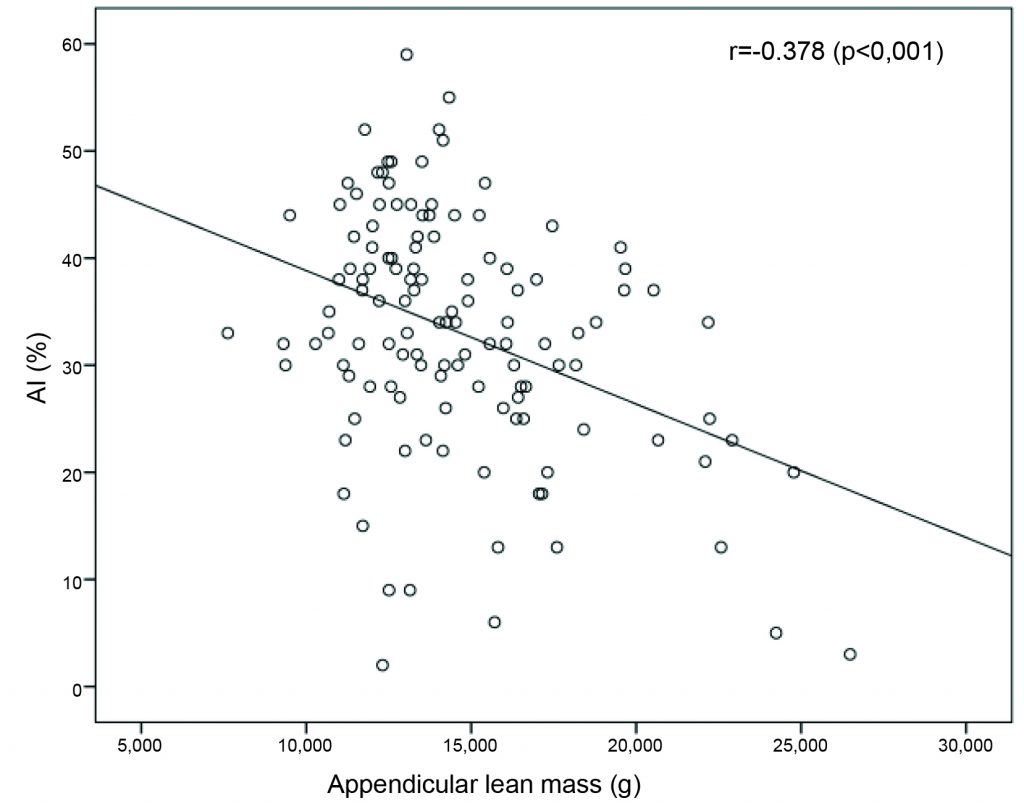Arq. Bras. Cardiol. 2021; 117(3): 457-462
Association of Body Composition with Arterial Stiffness in Long-lived People
This Original Article is referred by the Short Editorial "Chronological Age or Biological Age, Mainly a Matter of Lifestyle".
Abstract
Background
Arterial stiffness, obesity and sarcopenia correlate with each other and with cardiac outcomes in younger adults. However, there is little evidence of the association between body composition and markers of central arteries stiffness in long-lived people.
Objective
To evaluate the relationship between arterial stiffness and body composition in functionally independent long-lived individuals.
Methods
This is a cross-sectional analysis of the association between markers of arterial stiffness and body composition among participants in a longitudinal cohort of elderly individuals aged 80 years or older who were functionally independent and lived in the community . Body composition measurements were performed using dual energy X-ray absorptiometry (DEXA) and central circulation parameters (CCP) obtained by a non-invasive oscillometric method through the Mobil-O-Graph 24h PWA Monitor® device. The central parameters evaluated were: pulse wave velocity (PWV), augmentation Index (AIx), pulse pressure amplification index (PPAi) and central pulse pressure (cPP). These were correlated to total lean mass (LM) and appendicular lean mass (aLM), body fat percentage, and Baumgartner’s Index (BI). The level of significance was set at 5% for all tests.
Results
Data from 124 elderly people with a mean age of 87.1 years (SD ± 4.3 years) were analyzed, with 74.2% of women and 57.3% of white. There was a statistically significant inverse correlation of AIx with LM (r = -0.391, p <0.001), aLM (r = -0.378, p <0.001), and BI (r = -0.258, p = 0.004). Also, cPP had an inversely proportional association with LM (r = -0.268, p = 0.003), aLM (r = -0.288, p = 0.001), and BI (r = -0.265, p = 0.003). When assessing the relationship between fat mass and CCP, a statistically significant direct relationship was observed only between AIx and body fat percentage (r = 0.197, p = 0.029).
Conclusion
In long-lived people, body fat percentage is directly associated with arterial stiffness and inversely associated with the amount of LM. These findings may be associated with increased cardiovascular risk.
Keywords: Aged; Body Composition; DEXA; Fats; Vascular Stiffness
750

